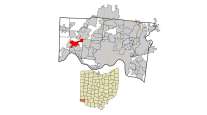As National Rail Strike Looms, Freight Customers Seek Options
This story appears in the Dec. 5 print edition of Transport Topics.
Editor’s Note: Freight railroads and unions reached tentative agreements averting a strike after this issue went to press.
U.S.-based freight railroads and their major customers, including intermodal fleets, raced last week to prepare for what could be the first nationwide rail strike in two decades as soon as Dec. 6.
As shippers, truckers and others that rely on rail service make contingency plans, the railroads last week turned up the pressure for congressional intervention if a work stoppage occurs.
A stoppage — a strike by the unions or a lockout by the carriers — looms after the Brotherhood of Locomotive Engineers and Trainmen and the American Train Dispatchers Association, unions totaling about 26,000 workers, on Nov. 29 rejected the carriers’ offer to extend contract bargaining until February. However, contract talks were continuing at press time.
The potential halt in train service would be the first since 1991, when intermodal shipments were about 25% of total rail freight. As intermodal has matured, truck/rail shipments now represent 43% of all rail freight, or about 40,000 loads tendered per day.
“Any short-term or long-term disruption would be fairly catastrophic,” said John White, president of U.S. Xpress Inc., which typically moves about 1,000 intermodal loads daily in early December.
“The challenge for us is that [truck] capacity today remains tight,” said White, meaning it would be difficult to shift cargo back to the highways. White added that U.S. Xpress is developing contingency plans with customers on evaluating options. “I would be hard pressed to cover 100% of our intermodal loads with our own assets. If there was an extended rail work stoppage, a lot of freight would sit on the docks.”
“A lot of shippers are looking for alternatives, which generally seems to be trucks,” said Curtis Whalen, executive director of the Intermodal Motor Carriers Conference at American Trucking Associations. “Trucks will move a lot of what is otherwise displaced. The last thing a shipper needs is to have his last-minute holiday merchandise delayed.”
Under federal law, Congress has the power to end a rail lockout or strike and impose contract terms.
Talks in the current dispute went on for nearly two years until early October, when a Presidential Emergency Board was appointed to recommend a settlement during a “cooling off” period that ends Dec. 6.
Not all carriers operating in the United States are part of the bargaining.
All U.S. workers at Canadian National Railway and some at Canadian Pacific Railway are covered by contracts negotiated separately with the same unions.
White said the chances of an extended walkout are “very slim” because he believes Congress and President Obama would step in to extend the “cooling off” period or complete legislation to end a disruption.
“The odds for legislation being needed have increased dramatically,” said Edward Hamberger, president of the Association of American Railroads, in a Nov. 30 message to trade groups. “Please let Congress know how important expeditious action is.”
More than intermodal service would be affected.
Richard Dodd, president of RDC Logistics, said his industrial products customers, particularly oil exploration companies, would be hurt severely.
“A rail strike will impede the supply chain of oil-field services companies and related industries (sand, pipe, rig equipment, etc.) that every day is trying to keep up with the frantic rush to drill new wells,” hurting “one of the few bright spots in this slow recovery,” he said.
The offer to extend negotiations came from the National Carriers’ Conference Committee, the bargaining agent for Union Pacific and other major rail carriers.
The carrier group endorsed a two-month extension proposed by the Brotherhood of Maintenance of Way Employes, but only if the engineers and dispatchers went along.
Other groups such as the National Retail Federation and the National Industrial Transportation League have urged Congress to be ready to act. The 1991 stoppage lasted one day.
Among intermodal customers, UPS spokesman Norman Black said the company hadn’t changed any operations as of Nov. 29, and the package carrier would not publicly discuss contingency plans.
FedEx Freight “is closely monitoring rail labor negotiations and receiving updates from rail vendors,” spokeswoman Debra Phillips said. “We have contingency plans designed to minimize disruption to our customers.”
“There are available contingencies, for instance, trucking time-critical cargo,” said Mike Zampa, spokesman for ocean carrier APL. “What’s most important is an equitable resolution of the issues without disruption.”
Spokeswomen for Hub Group and Pacer International, which each generate about $1.5 billion in annual intermodal revenue, declined to comment.
Maersk Line, the world’s largest ocean carrier, declined comment on the rail situation. So did motor carrier J.B. Hunt, which derives almost 60% of its revenue from intermodal.
A work stoppage also could disrupt the railroads’ revenue stream of $160 million a day from all types of freight and curtail profits that remain at record levels, approaching $12 billion in the first three quarters of 2011.
The current Presidential Emergency Board proposed pay increases of 3.2% annually for six years and new cost-sharing approaches for health care and work-related costs. Its plan was modeled on an August deal between the United Transportation Union and the carriers.
The PEB’s plan was accepted by unions representing clerical, signal and maintenance shop workers.
Unhappy with the PEB’s recommendations, the track maintenance workers offered the extension to create more time to address its members’ away-from-home expenses.
Staff reporter Greg Johnson contributed to this article.




